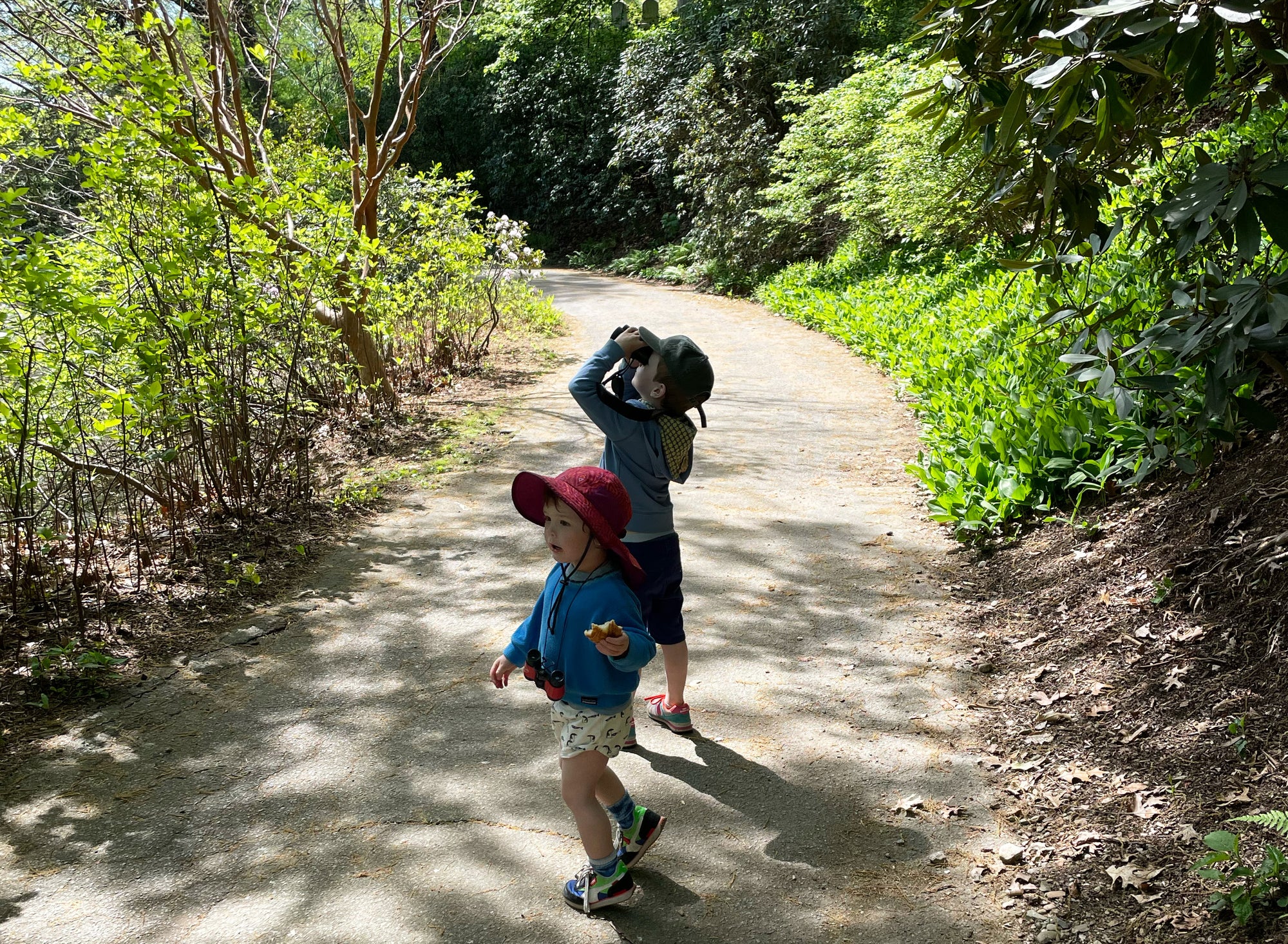
Birds are a big deal in my home. Most days, at least one of us dons a shirt or a hat with birds on them. Most evenings, we all play Larkwire before bedtime. And every Sunday morning, we head to Mt. Auburn Cemetery, here in Cambridge, MA, to look for birds. Birding with my husband and kids has become one of my most treasured pastimes. It has helped my kids explore their own neighborhood, connect with nature, piqued their interest in local ecosystems, and bolstered quality outdoor time as a family.

My father always loved the outdoors, but his love of birds developed relatively late in life. If I had to try and pinpoint the moment, I’d say he caught the birding bug during a trip to Africa when I was a teenager. After that, our weekly (in his case, daily) family walks in Mt. Auburn Cemetery became all about birds. He kept lists of what he saw, studied the endless variations of species and tried to differentiate between calls. For my dad, it turned into an avocation that kept him engaged for years. Even when he was ill, he was able to still take walks — albeit more slowly — and tried his darnedest to spot the particular plumage of the birds around him. I appreciated this hobby and the delight (and challenge) it provided, and loved to walk with him, seeking out the warblers in the spring, hawks and owls in the cooler months and even the rare solitary sandpiper in summer.
This past February, my son Eli broke his femur and most of how he spent his time, and our routine family activities, were suddenly inaccessible. Birding not only remained possible, but over the subsequent weeks and months, it proved itself invaluable to all of us. Even in his wheelchair, Eli could still go outside to look and listen for birds, and while it certainly served as a needed distraction from his frustrations or discomfort, I saw how it directly impacted his recovery as well. 
Bird watching is, at its core, an act of mindfulness. Multiple research studies have shown a link between birding and a sense of calm, a reduction in stress, and an easing of depression and anxiety in all ages. Eli’s leg would have recovered just fine without birding, but it gave him a framework for slowing down and focusing that seems to have lingered in him despite getting back to full mobility.
I find myself entranced by my kids watching birds. I’m amazed by how their focus and concentration seems so much more resilient to distraction than in other settings. It’s not always seamless or immediate, but there’s a confidence in how they get quiet as they tune in to the sights, smells and sounds around them. And similarly, the patience with which they have come to approach birding feels uniquely different from the day-to-day. Many species look practically identical other than the tiniest distinguishing feature. The key is being a good observer and paying close attention to details and it’s been wonderful to watch my kids rise to the challenge. That said, there's no denying the thrill of discovering a less common species or identifying a hidden bird by its call, and their wonder and sense of achievement is contagious:
- How do tiny ruby-throated hummingbirds–with brains smaller than a grain of rice– migrate thousands of miles a year, returning to the same feeders each year - on pretty much the exact same day?!
- Some birds sleep while they fly! Is that like dreaming?
- Can you believe a downy woodpecker can peck up to 16x per second?!
- Did you know the Peregrine Falcon is the fastest animal on earth, zooming up to 242mph?!

You don’t need much to birdwatch — neither gear nor experience.
All you need is a pair of binoculars and a bird book (or, let’s be honest, a smartphone). Bird feeders are a great way to learn about the behaviors and habits of your local wildlife. (Not to mention, monitoring and refilling feeders is a great household job for kids!) Start with the species outside your window or in your backyard, then head to a nearby park or nature preserve. My kids like to keep lists of species they’ve spotted with the date and any interesting observations they may have made about the bird. Perhaps your child would prefer a journal for quick sketches of the birds they see?
Fostering young birders, who care about the birds around them, helps kids situate themselves within their environment, appreciate nature’s rightful place as part of their surroundings, and cultivate a more caring approach to community.
Birds are everywhere. Get to know your avian neighbors!
With love,
Alex

Birding for kids Resources
CornellLab: How to Connect Kids with Birds
Audubon's Bird Activities for Kids
Audubon's Binocular Guide for Growing Birders
Audubon's Adventures: Get to Know Birds



Comment
Hello, Alex
I remember Henry’s love of birding and I love your description. Missing you — for years! — and waiting for you to appear in Paris with Dan, Eli, and Henry.
Love,
Nina